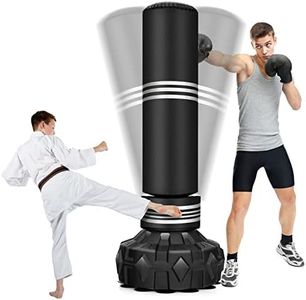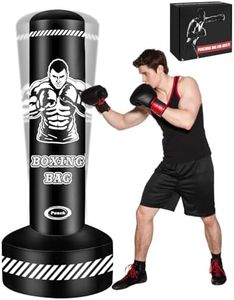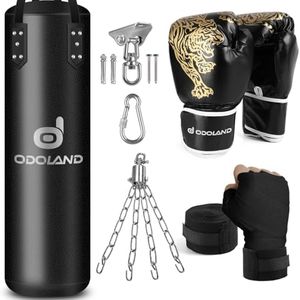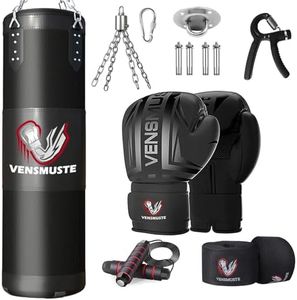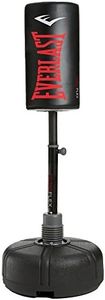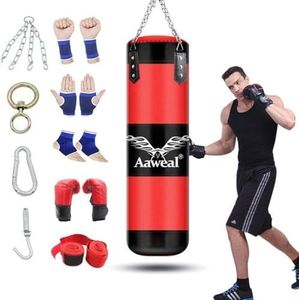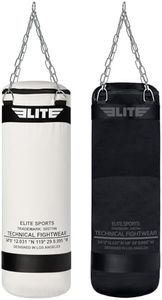We Use CookiesWe use cookies to enhance the security, performance,
functionality and for analytical and promotional activities. By continuing to browse this site you
are agreeing to our privacy policy
10 Best Heavy Bags
From leading brands and best sellers available on the web.By clicking on a link to a third party's website, log data is shared with that third party.
Buying Guide for the Best Heavy Bags
Choosing the right heavy bag can make a big difference in your training experience, whether you’re into boxing, kickboxing, or general fitness. Start by thinking about how you plan to use your heavy bag and where you will place it. Consider your training goals (like strength, technique, cardio, or stress relief) and your available space. Focus on matching the bag’s features with the types of strikes you'll practice and your own height, weight, and skill level. A good fit will help you train safely and effectively.WeightThe weight of a heavy bag is crucial because it determines how much resistance the bag offers during training and how much it moves when you hit it. Lighter bags (around 40-70 lbs) swing more and are easier to move, making them a good choice for beginners, speed work, or those focusing on technique and combinations. Medium-weight bags (70-100 lbs) provide a balance between movement and resistance, fitting for most adults who want to train power and accuracy. Heavier bags (over 100 lbs) don't swing much and are suited for heavy hitters or those working on building real strength. To pick the right weight, consider your own body weight and strength: the heavier or stronger you are, the heavier your bag can be. A common rule is the bag should be about half your body weight, but your training goals matter most.
Bag LengthBag length refers to how tall the heavy bag is from top to bottom. Shorter bags (about 3-4 feet) are easiest for practicing punches and upper-body movements, while longer bags (5-6 feet) are better for working both punches and kicks, making them ideal for kickboxers or anyone wanting to do low kicks or knee strikes. Your height and fighting style will help guide your choice: taller people or those interested in full-body strikes should consider longer bags, while those focused on boxing or with limited space may find shorter bags more practical.
Filling MaterialThe filling material inside a heavy bag affects how hard it feels when struck and how much it absorbs the impact. Common fillings include cloth, sand, water, or a mix. Cloth-filled bags feel softer and are easier on the hands and joints, suitable for extended sessions or beginners. Sand and water-filled bags are denser and offer a firmer, more 'solid' hit, which can be great for increasing power but may be tougher on your arms and legs if you’re new. Your experience level and injury history should guide your choice—those with sensitive joints or starting out should pick softer fillings, while experienced users can opt for denser fillers.
Outer MaterialThe outer material is what covers the bag and affects its durability and comfort during use. Synthetic leather is popular due to its balance between durability and price, and it handles everyday use well. Genuine leather feels better to hit and is very durable but may require more care. Vinyl and canvas are budget options but can wear out sooner, especially if used often. If you’re going to train regularly or hit hard, a stronger and more durable cover will last longer; casual users might be fine with more basic materials.
Mounting StyleMounting style refers to how the heavy bag is set up in your space. Hanging bags are attached to the ceiling or a stand, which allows them to swing and move naturally, simulating a moving opponent, but require sturdy installation. Freestanding bags sit on a weighted base and are easier to move or store, making them ideal for those with space limitations or who can’t modify their walls or ceiling. Consider your space and whether you want the bag to be permanent or portable before deciding.

